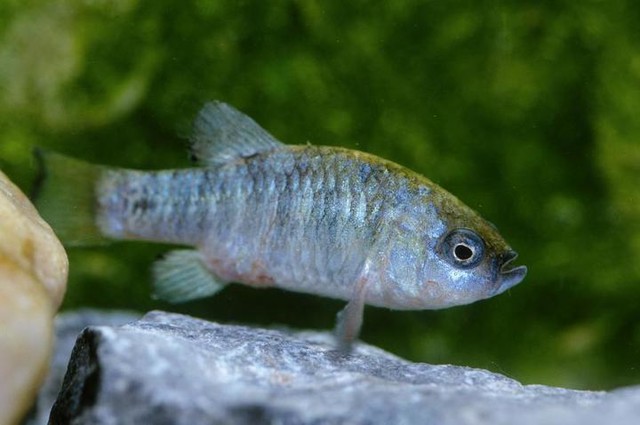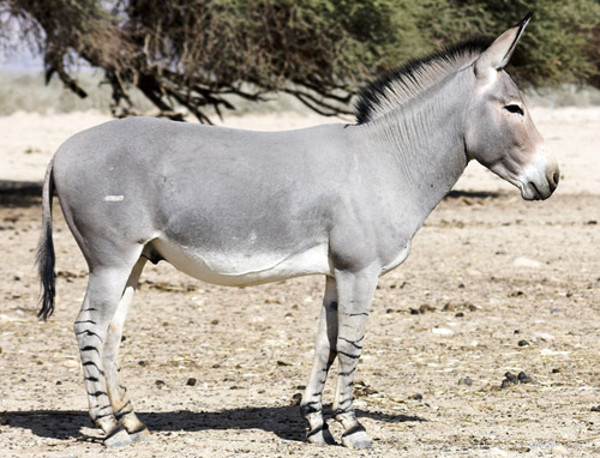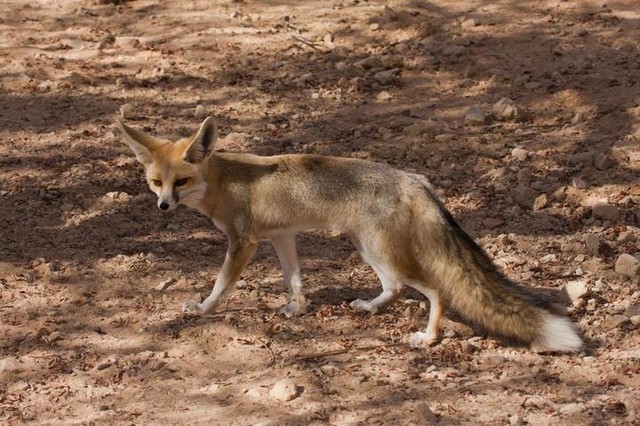Animals live in the hottest place in the world
Some animals have the ability to survive and grow in areas with the driest and hottest environments on Earth.
Pupfish fish
Many pupfish species live in the Americas, the Caribbean has the ability to adapt and live in harsh environmental conditions. Sometimes, they are considered extreme animals, according to National Geographic. If you give pupfish fish to freshwater or salt water, water with high temperatures or low temperatures, they still live well, said Evan Carson, a biologist at the University of New Mexico, USA.

Ash Meadows Amaragosa pupfish Fish lives in Death Valley National Park, USA.(Photo: Alamy.)
Ash Meadows Amaragosa pupfish live in streams with a water temperature of 37.7 degrees Celsius in Death Valley National Park, USA. But the water temperature here is still too low compared to the hot springs in the Chihuahuan Desert, Mexico.
For example, the hot spring of El Pandeño in the Chihuahuan desert is a fish habitat Julimes pupfish. The water level can be up to 45.5 degrees C. The bighead pupfish live in hot springs in Baños de San Diego, Mexico, where the water temperature is 43.8 degrees Celsius.
Wild African donkey
Temperatures in the area of Dallol, northern Ethiopia, often reach 48.8 degrees Celsius in the summer. But this hot spot still has about 400 wild African donkeys living. Diet of African wild asses including grasses, bark and leaves.

African wild donkeys often live in arid regions in northeastern Africa.(Photo: Equinest.)
To cool down, the African wild ass has a flexible metabolic process and the ability to drink plenty of water in a short time. But they don't need much water like farm animals like sheep and goats, said Fiona Marshall, an anthropologist at the University of Washington.
Reported Rüppell
Lut Desert, Iran, is one of the hottest places on Earth. In 2005, the US Space Agency (NASA) once measured the highest temperature here at 70.7 degrees Celsius.
Report Rüppell, or sand foxes, to live on the hot sands of Lut desert due to the ability to save water. This mammal draws water primarily from eating prey. They eat at night to keep their body cool and avoid losing valuable moisture.

Rüppell fox lives on the hot sands of Lut desert, Iran.(Photo: Alamy.)
In addition, the Rüppell fox also has a number of other adaptive features including: a small body that helps in better heat dissipation, low body metabolic rate to save energy, concentrated urine reduces the amount of water. pass.
Greater Bilby Mouse
Greater Bilby mice, or earth mice, are marsupials that live in arid climates in Queensland, Australia. NASA satellites that measured the highest temperature in the region were 69.4 degrees Celsius in 2003.

Greater Bilby rats live in arid lands in Australia.(Photo: Wikimedia.)
John Wairnowski, a biologist at Charles Darwin University, Australia, said that greater bilby could avoid excessive heat by building and hiding in complex underground cave systems. They dug spiral caves with their feet and claws. The cave can be 2 m deep and 3 m long.
Night parrot
Wairnowski said that another animal in Australia that can live in a high temperature environment is a night parrot. These are quite shy animals, they just go out to feed at night and hide in the trees during the day to avoid heat.
 Night parrots are native birds in Australia that can live in dry environments.(Photo: Guff.)
Night parrots are native birds in Australia that can live in dry environments.(Photo: Guff.)
Night parrots were once considered locally extinct in Queensland until it was rediscovered in 2013.
- The 9 hottest places on the planet are still inhabited
- Life in the hottest land in the world
- 12 hottest things in the universe
- The hottest and coldest places on Earth
- The hottest places on the planet
- See the migration process of animals in 3D
- 8 animals do not eat and still live well
- 10 animals live in an unexpected place
- The magical beauty of the hottest place on Earth
- Earth experienced the hottest June in more than 130 years
- 2011 - one of the ten hottest years
- 7 most difficult places to live in the world
 Animal 'suffering' after hibernation
Animal 'suffering' after hibernation Why do goats climb well?
Why do goats climb well? Scientists were surprised to see chimpanzees eating turtles
Scientists were surprised to see chimpanzees eating turtles Giant catfish died deadly due to drought in Thailand
Giant catfish died deadly due to drought in Thailand